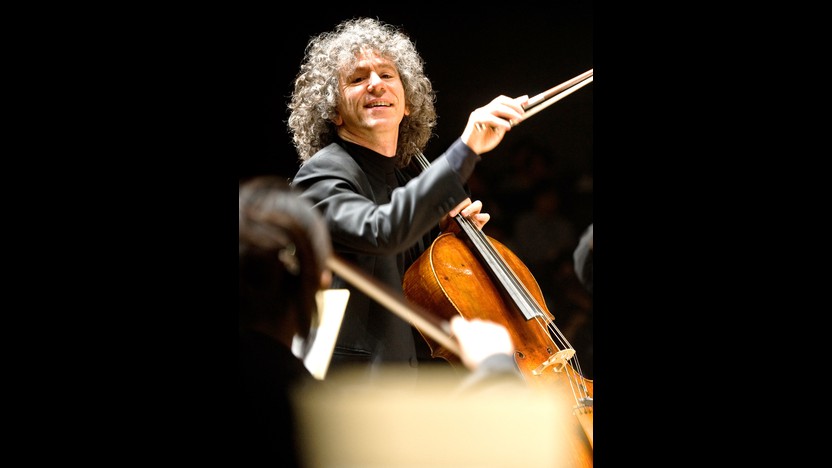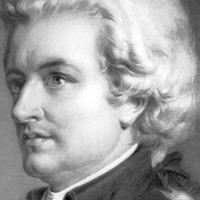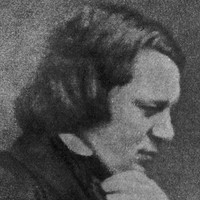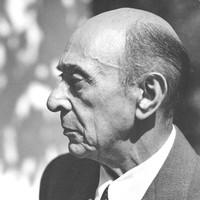Steven Isserlis Plays Schumann’s Cello Concerto

Sponsored By
- May 9, 2013

- May 10, 2013

- May 10, 2013

- May 11, 2013


Sponsored By




 Listen to Audio
Listen to Audio
The Marriage of Figaro was the first of Mozart’s three collaborations with the Italian librettist Lorenzo da Ponte, who also scripted Don Giovanni and Così fan tutte. It was possibly Mozart’s idea to borrow the scenario from a 1778 French play by Pierre Beaumarchais, a sequel to his earlier hit, The Barber of Seville (later immortalized in Rossini’s 1816 opera). The farce was banned in Vienna at the time for its sarcastic condemnation of the aristocracy, and da Ponte had to scrub the work of its political overtones to gain the emperor’s approval.
The Marriage of Figaro transpires over the course of “one crazy day.” Figaro, the head servant to Count Almaviva, is due to wed the maid Susanna, who meanwhile has been subjected to the Count’s lecherous advances. In the end, the Count gets his comeuppance, and Figaro and Susanna marry. Although the music of the overture has no major presence later in the opera, it sets the scene for the hilarity that ensues. The overture’s form is quite lean, with neither a repeat of the exposition nor a development section. The frenetic Presto tempo and persistent eighth-notes give the prelude a breathless feeling throughout its four-minute sprint, while rising figures and drawn-out crescendos establish the buoyant tone of the opera.
Aaron Grad ©2013
 Listen to Audio
Listen to Audio
Robert Schumann moved to Düsseldorf in 1850 to begin his new post as Municipal Music Director. Despite the added strain of conducting and managing an orchestra, he entered one of his most productive periods of composition, completing fifty works over the next four years. Sadly, this phase also marked the final collapse of Schumann’s mental health. Not long after the move, Clara Schumann noted her husband’s “highly nervous, irritable, excited mood.” The orchestra forced Robert to resign his conducting post in 1853, and the next year he threw himself into the Rhine River in a suicide attempt. He lived out his remaining years in an insane asylum.
One of the first pieces Schumann completed in Düsseldorf was originally labeled a Konzertstück for cello and orchestra and later published as a Cello Concerto. The composition does contain the three typical movements of a concerto, but the heading of Konzertstück (“Concert Piece”) captures Schumann’s desire to create a more integrated and continuous form, rather than a showy concerto full of virtuosity for its own sake. To that end, he dispensed with a hefty orchestral introduction, connected the three movements with linking material, and included orchestral accompaniment during a solo cadenza, among other departures from traditional concerto form. Schumann had played the cello as a boy, and again briefly after a hand injury curtailed his piano playing, and he put his intimate understanding of the instrument to use in the concerto. The solo part exploits the full sonic range of the instrument, from the growling bass of the open C-string to the steely soprano territory beyond the treble staff, while the deft orchestration ensures that the soloist is never obscured.
Schumann penned the Cello Concerto in just two weeks, completing it on the day he conducted his first concert in Düsseldorf. He must have held some misgivings about the work, since he canceled a scheduled premiere in 1852 and delayed its publication until 1854. The first performance did not occur until 1860, four years after Schumann died.
The interconnected movements feature thematic cross-references throughout. The opening gesture of three successive chords, for example, takes on new forms in the second and third movements; likewise, the interval of a descending fifth that pervades the slow movement reappears in the accompaniment to the finale’s cadenza. Still, for all its formal novelty, it is the heartbreaking lyricism that distinguishes this concerto. Clara Schumann was among the first to appreciate the strengths of the work when, in 1851, she wrote, “The romantic quality, the vivacity, the freshness and humor, also the highly interesting interweaving of violoncello and orchestra are indeed wholly ravishing, and what euphony and deep feeling one finds in all the melodic passages!”
Aaron Grad ©2013

Audience members who start to squirm as soon as they notice the name Arnold Schoenberg on the program need not fear the Ten Early Waltzes for Strings. Schoenberg was well aware of his dubious reputation when he commented, “If people speak of me, they at once connect me with horror, with atonality, and with composition with twelve tones. Generally it is always forgotten that before I developed these new techniques, there were two or three periods in which I had to acquire the technical armament that enabled me to stand distinctly on my own feet….”
The Ten Early Waltzes were apparently written in 1897, before Schoenberg’s twenty-third birthday, and they represent his earliest period, when his models were the masters of Viennese classicism and he was enamored of Brahms. He had only recently dedicated himself to a musical career. His mother, like so many parents then and now, worried that he would never make a living in music, so she found him a position as a bank clerk. It didn’t last very long, though. According to Schoenberg’s sister, the director of the bank urged their mother to allow her brother to become a musician: he was of little use to the bank since he covered all of his paperwork with music. To earn a living he conducted workers’ choruses and orchestrated operettas, and he expanded his musical horizons through acquaintanceships with fellow musicians. Notable among these was Alexander Zemlinsky, who had founded the musical association Polyhymnia in 1895, the same year that Schoenberg left the bank to embark on a musical career. Zemlinsky described the Polyhymnia orchestra as “not large: a couple of violins, one viola, one cello, and one double bass. We were young and thirsting for music, and we met once a week to play…. At the one desk of cellos sat a young man who mistreated his instrument, playing with more fire than accuracy…. This cellist was none other than Arnold Schoenberg.” At their second public concert, on March 2, 1896, Polyhymnia performed Schoenberg’s Notturno for solo violin, harp, and strings alongside works by Bach, Boccherini, Grieg, and Zemlinsky. It was probably with this chamber orchestra in mind that Schoenberg composed his waltzes for strings, or rather, began composing them. After completing ten he started an eleventh but stopped after only eight bars. Who knows how many more he might have written had a performance opportunity materialized? We have no evidence that they were played by Polyhymnia or any other ensemble during Schoenberg’s lifetime. The first performance of the ten completed waltzes was at the Schönberg-Haus in Mödling, a Vienna suburb, on May 1, 2003.
It should not be surprising that a Vienna-born composer like Schoenberg would be drawn to the waltz throughout his life—he composed the Alliance-Walzer for piano when he was eight and nearly 65 years later used waltz fragments in his String Trio—but his model for these early waltzes was not the waltzes of the Strauss family, but rather those of Brahms, with perhaps some hints of Dvořák.
David Grayson ©2013

(Duration: 25 min)
When Wolfgang Amadeus Mozart began writing symphonies, he was an eight-year-old keyboard prodigy in London, where he had played for King George III and befriended Johann Christian Bach — the youngest son of Johann Sebastian Bach, and a trendsetter in the emerging genre of the symphony. As a teenager back in his hometown of Salzburg, Mozart looked to the example of Franz Joseph Haydn, whose brother happened to work alongside Mozart and his father, and some of the symphonies Mozart wrote as a seventeen- and eighteen-year-old ranked among his first truly brilliant compositions. By that time he had already completed three-fourths of his lifetime symphonic output.
Mozart had fewer occasions to write symphonies during his heyday as a busy freelancer in Vienna. He might never have written his three final symphonies were it not for the money troubles that plagued his final years, a period when demand for his performances had dried up. Some opportunity must have sparked this symphonic trilogy, but most likely nothing came of it. Mozart may not even have heard all three before he died.
Symphony No. 39 (the first of the final trilogy) is Mozart’s only mature symphony without oboes, instead featuring clarinets. It is also one of his few symphonies to begin with a slow introduction, a structure favored by Haydn. The mellow key of E-flat and a rolling three-beat tempo reinforce the gentle character of the fast body of the opening movement.
The Andante con moto second movement preserves the docile atmosphere. Strings introduce the innocent theme alone at first, but individual woodwinds later emerge for some of the movement’s most personal passages, their echoing lines interweaving with chamber-music delicacy.
Interrupting the noble and sturdy Menuetto, whimsical clarinet counterpoint in the contrasting trio section parodies the ländler, an Austrian folk dance. In the finale, the main theme separates into malleable scale fragments and leaps, foreshadowing Ludwig van Beethoven’s symphonies with their relentless manipulations of small motives.
Aaron Grad ©2024
Please note: An additional performance of this program has been added to the schedule on Friday, May 10 at 10:30am at Wooddale Church. This concert is now available to the general public. If you are a Wooddale Friday Morning Series season ticket holder, you may request to exchange tickets from one of your canceled concerts into this newly added concert through our online ticket exchange form or by calling our Ticket Office at 651.291.1144.
*These events have limited availability. Click here to be added to a waiting list. *
Get driving directions and find nearby parking.
Find dining options close to the venue.
View seating charts to find out where you'll be seating.
Get driving directions and find nearby parking.
Find dining options close to the venue.
View seating charts to find out where you'll be seating.
